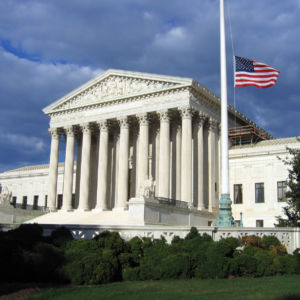When it comes to the Supreme Court, how old is too old?
In a recent interview, Justice Ruth Bader Ginsburg observed “I’m now 85. My senior colleague, Justice John Paul Stevens, he stepped down when he was 90, so think I have about at least five more years.”
The prospect of another half decade of jurisprudence from the Supreme Court’s most outspoken liberal makes the Left cheer and the Right cringe. Following Justice Stevens’ example may sound a bit extreme, but at 90 years and two months, he wasn’t the court’s oldest-serving justice. That record is held by Oliver Wendell Holmes, Jr. who called it quits at 90 years and ten months.
Should America’s most divisive and important decisions be in the hands of nonagenarians? Interestingly, the U.S. Constitution is silent on the question. Minimal ages are established for serving as representative, senator, or president. They’re 25, 30, and 35 respectively. But for SCOTUS? Nothing. An 18-year-old–including one who had never studied law--could be seated on the court tomorrow, if picked by the president and confirmed by the Senate.
For the record, the youngest person who ever served on the Supreme Court was Joseph Story. He was a 32-year-old lawyer from Marblehead, Massachusetts when President James Madison selected him to become an associate justice in 1811. He taught at Harvard in his spare time, performing both jobs until he died in 1845.
Age did, however, play an important role in the most famous (and disastrous) case of executive meddling within the judiciary branch.
President Franklin Roosevelt’s New Deal was intended to help America claw its way out of the Great Depression. But the Supreme Court under Chief Justice Charles Evans Hughes struck down several key elements of Roosevelt’s plan including its signature program, the National Recovery Act (NRA). New Dealers derisively called the court’s justices “nine old men.”
In 1936, FDR won his second term in an epic landslide, and he wasted no time spending his political capital. And he seized on another bit of constitutional vagueness regarding the Supreme Court to do it.
While the Constitution established the Supreme Court, it doesn’t say how many justices can serve on it. Roosevelt wanted to expand that number in order to appoint additional justices and get a pro-New-Deal majority.
The Judicial Procedures Reform Bill of 1937 was introduced that February. It boiled down to this: for every member of the Court age 70 years, six months and older, the president could appoint an additional justice. The number was capped at six extra justices, which would make a new total of fifteen.
Critics immediately called it what it was: a Court-packing bill. While New Deal zealots enthusiastically supported the plan, there was no great enthusiasm for it among the Democratic rank-and-file in Congress.
Then something interesting happened. Before the bill could come up for a vote in Congress, two justices unexpectedly switched to the liberal side and narrowly upheld as constitutional both the Social Security and National Labor Relations Acts. Washington wags said “a switch in time saved nine,” because those decisions took the wind out of the sails for Roosevelt’s pet plan. Critics said it proved there was no need to meddle with the Court’s makeup. The Court packing bill was soundly defeated in a Senate vote in July and the ill-advised idea died a quiet death.
But time was on Roosevelt’s side. One by one, the elderly justices died or retired. By 1942, FDR had finally appointed a Court to his liking.
The prospect of conservative justices like Kavanaugh (currently 53 years old) and Gorsuch (he’ll be 51 on August 29) has inspired some liberal analysts like CNN’s Jeffrey Toobin and Erwin Chemerinsky, dean of the UC Irvine School of Law to propose term limits for Supreme Court justices. A proposal that would limit justices to 18 years—giving every president two appointments per term—has gotten significant attention since Kavanaugh’s nomination.
(The only president in the 20th Century not to appoint at least one justice to the court? Jimmy Carter. William Howard Taft appointed six.)
Most Americans agree. According to a recent Morning Consult poll, 67 percent of Democrats and 58 percent of Republicans support term limits for Supreme Court Justices.
If Justice Ginsburg is good to her word and remains on the bench for another five years, that puts her retirement in 2023. By which time, she hopes, there would be a Democrat in the Oval Office. But if Trump is reelected, don’t be surprised if Ginsburg gives Justice Holmes a run for his money.

